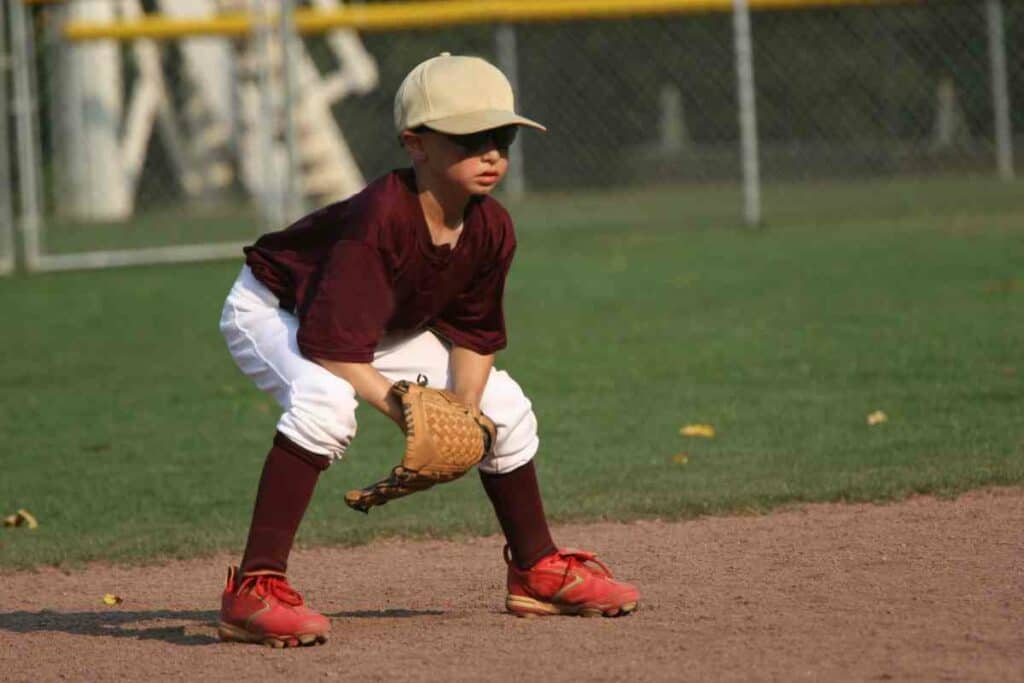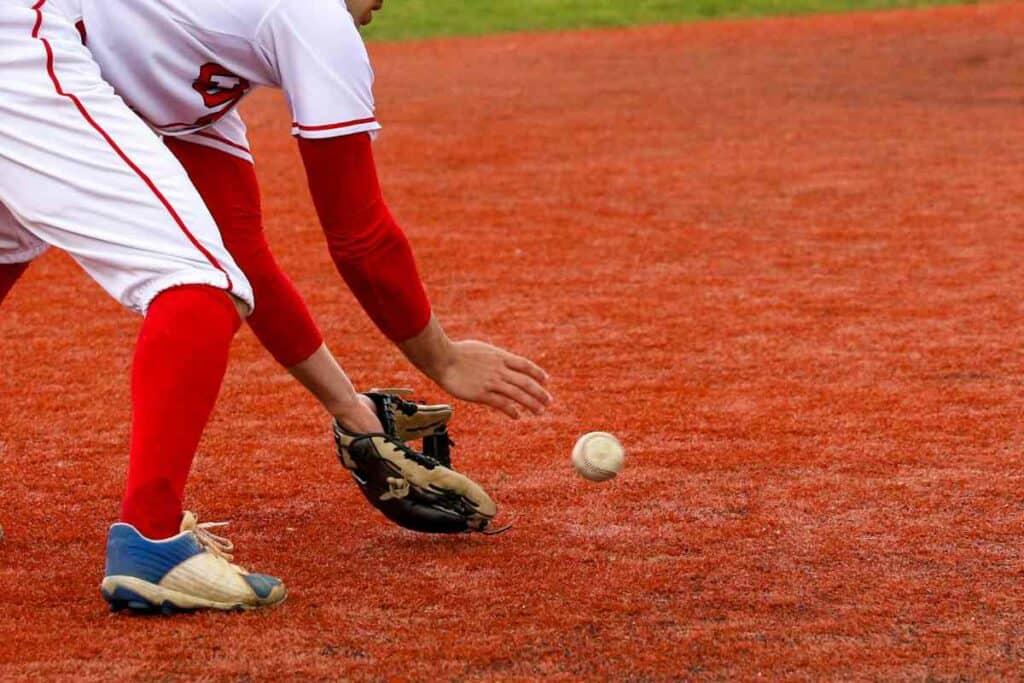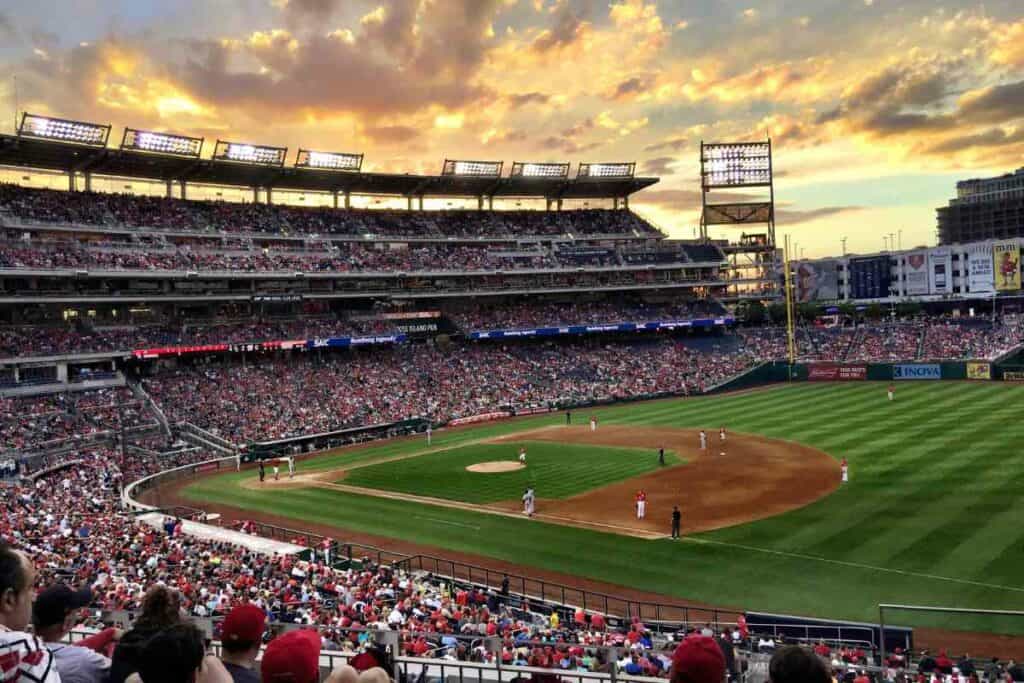Short Stop Position in Baseball: Key Skills and Responsibilities
The shortstop position in baseball is like the quarterback of the infield, requiring a unique blend of agility, intelligence, and skill. Imagine yourself in this role, as the linchpin between second and third base. Your mission? Field ground balls with finesse, execute diving stops, and turn those lightning-fast double plays.

Related Post! What Are The Most Important Positions In Baseball?
What are the responsibilities of a short stop in baseball?
In baseball, a shortstop’s responsibilities encompass a dynamic blend of physical prowess and strategic acumen. Positioned between second and third base, they must field ground balls with agility, coordinate with fellow infielders, and master precise positioning based on batter tendencies. Seamless interaction with teammates and leadership in both defense and offense define their pivotal role.
Your quick reflexes and a cannon of an arm are your trusted allies in this high-stakes game of baseball, where you play a pivotal role in the infield’s defense.
But being a shortstop isn’t just about flashy fielding moves. It’s about being a true maestro of the game, conducting the symphony of the infield defense with your deep understanding of baseball strategy. Picture yourself as the captain, calling the shots, positioning your teammates, and ensuring that your team’s defense is airtight.
Yet, your responsibilities don’t stop there. In this action-packed role, you’re also expected to shine on the offensive front. You’re not just a glove wizard; you’re a force to be reckoned with at the plate, contributing to your team’s hitting prowess and showcasing your base-running skills.
Now, let’s dive a bit deeper into the essence of the shortstop position:
Key Takeaways
- Shortstops need agility, top-notch defensive skills, and lightning-quick decision-making abilities.
- Leadership and an in-depth grasp of game strategies are fundamental for a shortstop’s success.
- Offensive contributions are a crucial part of a shortstop’s toolkit on the field.
Understanding the Shortstop Position
The shortstop position, often dubbed as the quarterback of the infield, is a pivotal role in baseball that demands extraordinary skills and a profound understanding of the game.

Role and Responsibilities
Related Posts!
Envision yourself as the linchpin of the infield, bridging the gap between second and third base. Your primary duty? Mastering the art of fielding ground balls, executing those double plays with panache, and seamlessly covering second or third base as the situation demands.
To excel in this role, your reflexes must be as sharp as a razor, your agility unmatched, and your throwing accuracy impeccable.
On the defensive front, you’re the gatekeeper, responsible for relaying throws from the outfield with precision, thwarting runners’ advances, and protecting your team’s precious runs. It’s a position that demands not just physical prowess but also mental agility, as you’re constantly making split-second decisions that can change the course of the game.
Evolution of the Position
The shortstop’s role has come a long way from being primarily a defensive powerhouse. Historically, shortstops were valued for their defensive wizardry, but times have changed. While your defensive skills remain vital, there’s now an added expectation for you to be an offensive powerhouse.
The shortstop has transitioned into a position that holds strategic importance on both the defensive and offensive fronts. In the ever-evolving world of baseball, you, as a shortstop, embody this exciting transformation, bringing a well-rounded skill set to the plate and the field alike.
Skills and Attributes of a Shortstop
The role of a shortstop in baseball is where the perfect fusion of physical prowess and mental acumen comes to life. Picture yourself in this pivotal position, where athleticism seamlessly melds with strategy to create an invaluable asset for your team’s defense.

Meeting the Physical and Mental Demands
Your range as a shortstop is the linchpin of your effectiveness. Imagine darting across the infield, covering ground with agility, and reacting lightning-fast to line drives and ground balls. Speed isn’t just about covering distance; it’s about swiftly responding to the unpredictable nature of the game.
But it’s not just physical agility that defines you; you’re the field general, the mental maestro of the infield. Sharp fielding instincts are your compass, guiding you through countless plays, each demanding a split-second decision.
Your hand-eye coordination is your secret weapon, whether it’s a rocket-fast ground ball or a high pop fly—you’ve got to judge it just right and make the play.
Related Post! How Long Is A Baseball Game?
Key Skills for Success
As a shortstop, you wield a cannon of an arm, capable of making those long throws from deep in the hole to first base. But it’s not just about strength; precision is paramount here, as errant throws can spell errors and unearned runs.
Your athleticism shines through when you make those gravity-defying diving stops or leap to snag a line drive. Strength is your ally when you face down a base runner’s slide while executing a double play.
Fielding isn’t just a matter of catching and throwing; it’s an art that combines all these attributes into one seamless performance.
To master these skills, you’ll engage in relentless practice and drills, like those you’ll find in the comprehensive guide “Baseball Skills and Drills.” These techniques will refine your abilities, ensuring your impact on the field is nothing short of remarkable.
The Legends of the Shortstop Position
Your appreciation for the shortstop position deepens as you delve into the stories of the legends who’ve left an indelible mark on the game. Shortstops are not just fielders; they are central figures in the rich tapestry of baseball’s history and evolution.
Legendary Players
- Cal Ripken Jr. stands tall as an iconic figure in baseball, famed for his record-breaking consecutive games played streak and his well-deserved place in the Baseball Hall of Fame. His unwavering dedication to the game set an enduring standard for durability and commitment.
- Derek Jeter carved out a legendary career with the New York Yankees, amassing five Gold Glove Awards and earning a reputation for clutch hitting and leadership. He showcased the shortstop position as a wellspring of both defensive brilliance and offensive prowess.
- The “Wizard of Oz,” Ozzie Smith, wowed fans with his acrobatic defense, complete with backflips and extraordinary fielding skills that secured him 13 consecutive Gold Gloves and a place in the Baseball Hall of Fame.
Other Notable Shortstops Include:
- Honus Wagner: A true batting maestro and versatile player, whose legacy resonates from the early 1900s.
- Ernie Banks: Fondly known as “Mr. Cub,” celebrated for his powerful hitting and endearing personality.
- Miguel Tejada: A standout player renowned for his offensive prowess and MVP title.
Influence Beyond the Diamond

Shortstops like Barry Larkin and Pee Wee Reese weren’t just exceptional fielders; they were leaders who demonstrated that a player’s impact extends far beyond the baseball diamond. Their influence on team dynamics and the sport’s culture played a pivotal role in their teams’ success.
Today, emerging talents like Francisco Lindor and Andrelton Simmons usher in a new era of athleticism in the shortstop position. They continue to set the bar higher, with their defensive mastery and flair on the field, inspiring future generations of baseball’s best players in one of its most demanding positions.
Strategic Play and Positioning
As the shortstop, your defensive prowess goes beyond individual skill—it’s about strategic positioning and seamless interaction with your teammates that truly elevate your game. Imagine yourself as the maestro of infield coordination, where every move is a well-orchestrated symphony.
Mastering Defensive Positioning
Your primary domain is the left side of the infield, but it’s not a static role; it’s a dance of positioning based on the batter’s tendencies. Picture yourself reading the batter’s mind and shifting your stance accordingly.
If you face a right-handed hitter with a penchant for sending balls your way, edging closer to third base can give you the upper hand. Here, the synergy between you and the third baseman becomes vital—your understanding is the key to covering ground balls and executing rapid plays.
When runners are on base, especially at first or second, brace yourself for the potential double play. You’re the linchpin here, the one who’ll receive the throw from the catcher when a runner eyes second base. This moment calls for lightning-quick reflexes and a telepathic connection with both the catcher and the second baseman.
The Art of Interaction with Teammates
Now, let’s talk teamwork. Your coordination with fellow infielders—particularly the second baseman, third baseman, and the pitcher—is the bedrock of your team’s defensive success. Think of it as a well-choreographed ballet.
When orchestrating double plays, precision is paramount. Your footwork must be flawless, and the transfer of the ball to the second baseman must be swift and accurate. Communication with the second baseman is your secret weapon, allowing you to signal who takes charge of second base during a steal attempt.
But your synergy doesn’t end there. Think about the ground balls aimed at the 5-6 hole—the space right between you and the third baseman. Working in sync with the third baseman is your ticket to covering that tricky territory efficiently.
Your connection with the outfielders is equally significant, especially when dealing with shallow fly balls or when a cut-off man is needed for throws from the outfield. And let’s not forget your regular dialogues with the pitcher and catcher.
Clear, concise communication ensures you’re on the same page, understanding pitch signals, planned pitch types, and anticipating batter reactions that might alter your positioning.
So, always remember: your role as the shortstop isn’t just about personal skill; it’s about being the anchor of your team’s defense through strategic positioning and seamless interaction with your teammates. It’s the magic that makes you an invaluable asset to your baseball team.
Frequently Asked Questions
The Shortstop position in baseball is crucial for a team’s defense and contributes significantly to offensive plays. Here are some common questions about this dynamic role.
What responsibilities does a shortstop have on the field?
As a shortstop, your primary responsibility is to cover the area between second and third base, making plays on ground balls, line drives, and pop flies. You also play a key role in fielding double plays and covering second base.
How do shortstops contribute offensively in baseball?
Offensively, shortstops are expected to be versatile hitters. It’s your job to efficiently get on base, utilize strategic hitting like bunts or hit-and-run plays, and advance base runners into scoring positions.
Are shortstops generally considered the best players on a team?
Shortstops are often among the most athletic players on a baseball team. Your agility, quick reflexes, and strong arm are essential, making it commonplace for the shortstop to be highly skilled, though not necessarily “the best” as every position is vital.
What is the historical significance of the shortstop position in baseball?
The shortstop position has evolved significantly, and its integration has been indicative of changing racial barriers within baseball. Historically, the position is central to the infield and pivotal in the sport’s development.
Which skills are essential for a successful shortstop?
To be a successful shortstop, you must develop a range of skills including quick lateral movement, a strong and accurate throwing arm, keen fielding abilities, and sharp situational awareness to make split-second decisions.
How does the shortstop interact with other infielders during play?
In coordination with other infielders, you as a shortstop have the responsibility of relaying throws to second and third base, communicating about ball coverage, and strategizing on positioning to fortify the infield’s defense.
